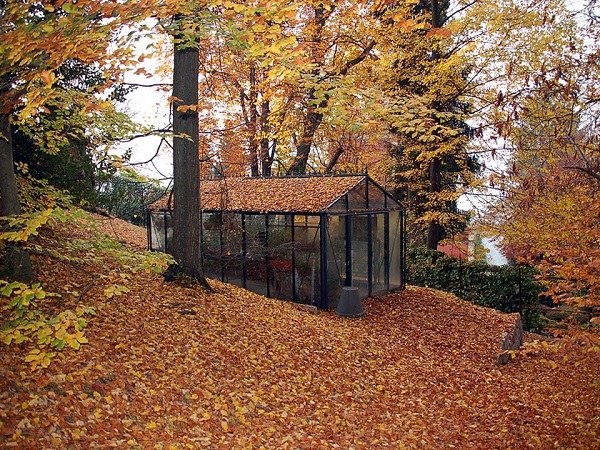
Fall is a wonderful season for growing in the greenhouse. With its more tempered climate, not too hot or cold, plants thrive. Also, there is still good natural lighting for continued growth. It is in autumn that the majority of my greenhouse plants are at their best, flourishing and in optimum health.
Greenhouse Environment
- Keep your general temperature between 50° F and 70° F.
- As growth starts to slow down, water and feed less frequently.
- Decrease damping down and ventilation.
- Watch for fungal diseases, which can appear this month. Treat with a fungicide promptly.
- In most areas, by the end of this month you can remove shading, but continue to leave some form in part of the greenhouse for young seedlings, cuttings, shade-loving ferns, etc.
Prepare for Winter
Now is the time to make repairs and replace:
- Torn poly covers
- Ineffective caulking
- Broken glass panels
- Upgrade your covering to insulated polycarbonate
- Switch out spent soil from grow tubs, beds, etc. and revitalize with new soil and compost.
- Check that your heating system is working properly, and vents are closing tightly.
To check the accuracy of your heater thermostat, monitor air temperature with a minimum/maximum thermometer. Set the heater thermostat 10°F above the present temperature. When the heater shuts off, reset the thermometer. Let the system run for 30 minutes with several on/off cycles, then check the thermometer. Variation should be 2°F to 4°F. More than 6°F variation should be investigated and corrected.
Clean Up Time
Before moving plants inside for over-wintering, use a safe disinfectant to get rid of any lurking pests and diseases hiding out under bench tops, on shelves, in soil, etc. hoping for a cozy winter retreat. Repair, replace or add benches and shelving to grow more over this fall and winter.
Keep on Growing
- Propagate now for holidays and spring.
- Flowers, shrubs, bulbs
- Sow seeds for next spring annuals such as Sweet Pea, pansy, and other colors.
- Take cuttings of geraniums, impatiens, and other frost-sensitive perennials.
- Take cuttings and propagate evergreens.
- Pot up bulb pans of flowering bulbs like Hyacinth and Narcissus and put in a cold frame, garden shed, root cellar or other cool, dark space for winter forcing later.
- Start to bring in frost-sensitive plants like Heliotrope, Canna, Fuchsias, banana, lemon, and orange trees, etc.
Vegetables
- Tomatoes – Continue to make sure the soil doesn’t dry out and keep temperature below 80°F on hot days. Pick fruit daily and remove any leaves covering the ripening fruit. Remove old, finished plants and dead leaf debris promptly to discourage disease, which can spread quickly this season.
- Cucumbers – This is normally the last month to grow them. Continue to water and pick them regularly then clear them out as they are finished producing.
- Peas – Peas take up little space when they are trellised in the greenhouse and they enjoy the cooler climate of fall. For speed of maturity, flavor, and overall productivity, we like snow peas are a good choice.
Fruits
Pick mini melons and grapes. Grapes generally need to be left on the vine from 1-2 weeks up to 2 months after the fruit looks ripe, depending on the variety.
Carol Yaw is the Co-Owner of Charley’s Greenhouse & Garden. You can visit their website at CharleysGH.com.
Related Articles & Free Email Newsletter Sign Up
Drip Irrigation in Greenhouses Minimizes Water Waste and Saves you Time
Greenhouse Activities for the Fall
What Greenhouse Bench is Best for Your Greenhouse?




Comment here